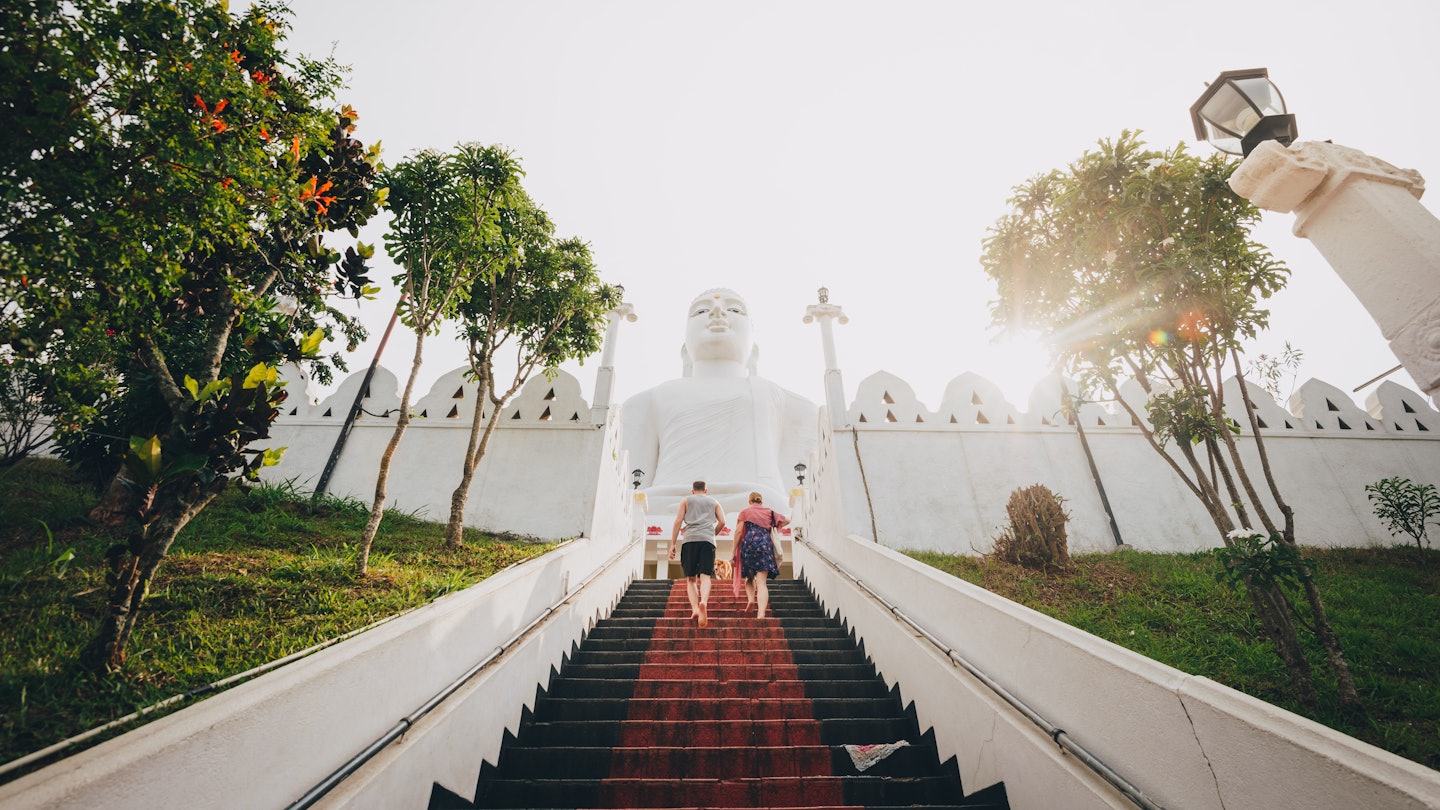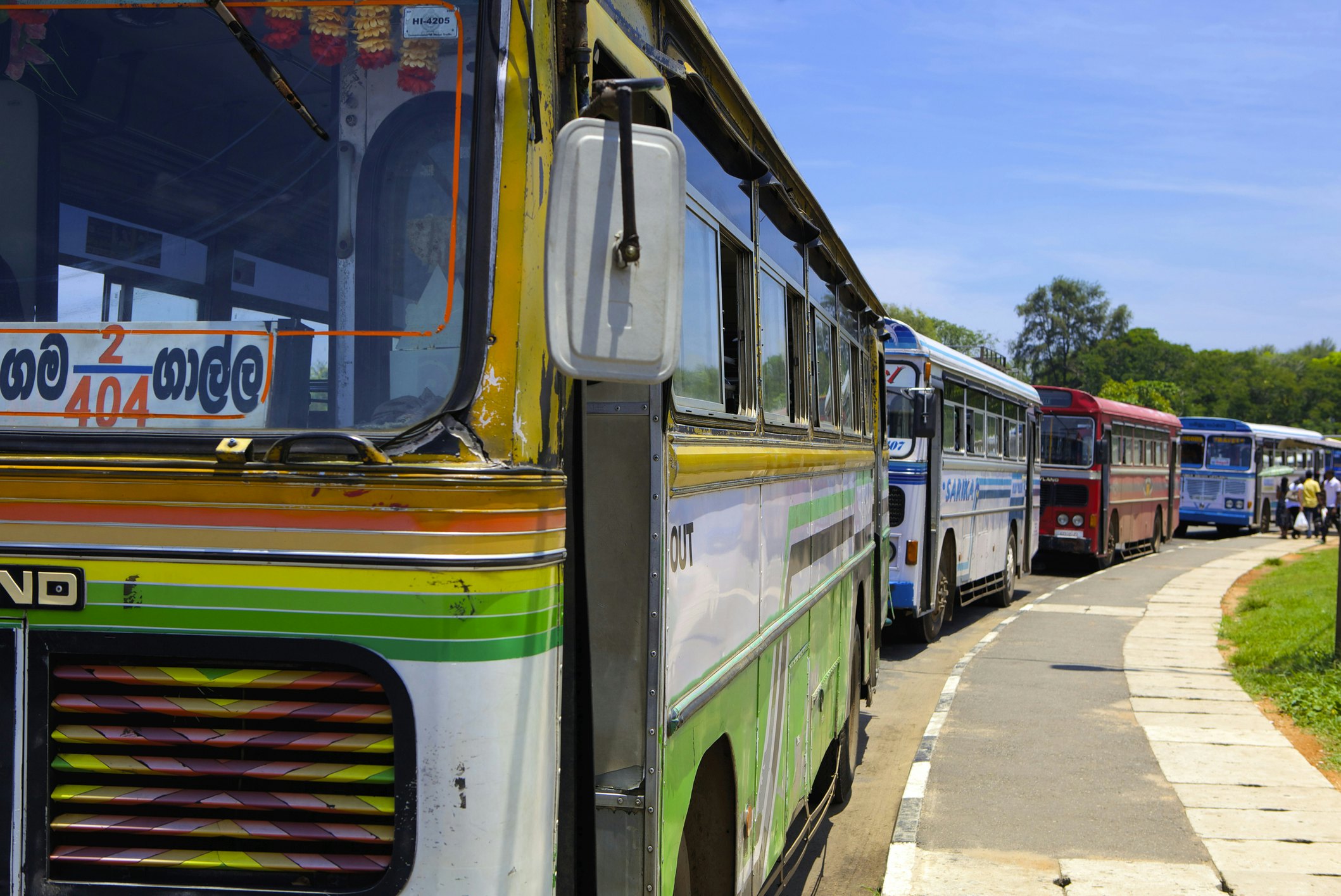
The 30 best countries, cities and regions to visit in 2025

Nov 20, 2024 • 10 min read

The more time you can spend in Sri Lanka the better, both to take in major sights and to just relax into island life. John Crux Photography/Getty Images
Sri Lanka is a diverse island home to many different ethnicities, religions and cultures. I was born and raised in different regions of this island nation, but I’ve spent enough time away from home to understand that for many visitors, Sri Lanka is often viewed as a smaller India – an island catering to the usual sun, sea and sand cliches.
I’ve witnessed my home transform through its highs and lows, and watched my people’s resilience shine through after long periods of uncertainty. And today, this breathtaking island of beaches, rainforests, mountains, spice-laden food and friendly locals makes for an excellent travel destination.
So, let's start with the two most common questions – is Sri Lanka safe to visit? Yes, absolutely! Is it always very hot? I won't sugarcoat it – you’ll either embrace the humidity or hate it entirely. Here are some more things you need to know before going to Sri Lanka.
Friends from abroad joke that when the plane lands and takes off in Sri Lanka, it will cover the entire length of the island. Yes, it looks tiny on a world map but with so much to do and see, you’ll need at least a month to travel to cave temples in Dambulla, ferry to far flung islands in Jaffna, and hike in the Knuckles Mountain Range. There are things to check off your list, of course, (such as climbing the UNESCO-listed Lion’s Rock in Sigiriya), but it’s more of a place to slow down and embrace island life.
If you are tight on time, you can squeeze in a visit to Sri Lanka in two weeks. Spend a week exploring the south coast beaches with a wildlife safari, and another week split between cultural sites in Kandy and the central highlands. Travel times are long and anything less than two weeks means you’ll spend most of your time in the back of a vehicle.

Most visitors assume the only good time to visit Sri Lanka is from December to April. This is, of course, the high season and the best time to explore the south coast beaches like Unawatuna and Tangalle with calmer seas and sunny, blue skies. However, the weather varies depending on where you are on the island.
When the south coast experiences monsoons from May until October, the east coast (home to some of the best beaches and surf breaks in the country like Arugam Bay and Nilaveli) has days filled with sunshine. And even if you are here during the rainy season, it doesn’t rain the whole day. It’s mostly a torrential downpour that lasts for less than an hour. Off-season travel has its perks – prices drop and attractions are free of large crowds.
And remember to not spend all your time at the beach. Yes, the beaches are great, but Sri Lanka has more than miles of palm-lined shores. Head inland to see the country’s rice fields, clay pot cooking in small villages, mountain towns with pleasant weather, and generational artists tending to their crafts.
Sri Lanka doesn’t require any compulsory vaccines, but consult your healthcare provider at least eight weeks before your visit to see what jabs you should get. Vaccinations for tetanus are usually recommended for all travelers and some may also need vaccinations for hepatitis A, hepatitis B and typhoid. If you’re staying for more than a month, consider getting a rabies shot (rabies can be fatal if not properly treated and animals like monkeys, dogs and cats can carry the parasite).
Sri Lanka is blazing hot and that's no exaggeration! Temperatures in Colombo and south coast cities like Galle can reach 37°C (98.6°F) with over 90% humidity throughout the year. The sweltering heat mixed with extreme humidity means that you’ll need easy, breezy, breathable outfits. For some reason, locals tend to prefer tight denims, but that's not the most comfortable option if you're not used to the climate.
Pack natural fabrics. Long maxi skirts, linen shorts, dresses, loose-fitting trousers, hats, flip-flops and sandals work great. Add some bright colors and pretty floral prints to blend in with the locals. A sweater and a raincoat come in handy if you’re visiting high country towns like Nuwara Eliya where temperatures can drop below 10°C (50°F) in the evenings and where it’s mostly wet and rainy.
Also remember to keep yourself hydrated and take plenty of electrolytes. Coconut water is available everywhere and it’s a great way to cool off.

Those blue trains riding past rolling tea gardens that pop up on your Instagram feed? Yes, they're a must-do and this train ride from Kandy to Ella is often considered one of the most beautiful train journeys in the world. Just remember to book your seats a few weeks in advance if you're traveling during the peak season between December and April.
The best place to book these tickets is the official website of Sri Lanka Railways. Trains also have some non-reserved coaches where you can just turn up at the station, buy a ticket and ride, but these compartments tend to get packed with locals going to work and school, and hawkers selling tea and snacks – it's unlikely you'll get a seat.
I recommend booking a tourist train such as Ella Odyssey and Dunhinda Odyssey. The tickets are a bit pricier, but the trains briefly stop at key sights along the way so you get to see cascading falls, vibrant Hindu temples and charming hill country railway stations with manicured flower beds. Plus you have enough time to snap photos.
Hotel De Plaza. Hotel De Pilawoos. These are some “hotels” you’ll come across on your travels, but they aren’t places to sleep. They are, in fact, where many locals go for a quick bite or an affordable, filling meal. No one really knows how this tradition of calling hole-in-the-walls hotels began, but if you want to sit side by side with locals and dig into a plate of greasy kottu (a carb-heavy mishmash of vegetables, meat, egg, and cheese) with a sugary, frothy milk tea, this is the place to do it.

All full moon days are considered poya days by Sri Lankan Buddhists, where devotees visit temples and attend religious activities. These auspicious, holy days are also dry days, which means that alcohol is not sold in supermarkets, bars or restaurants.
Sri Lanka has three main official languages: Sinhala, Tamil and English. Many locals speak at least basic English, and you won’t have a hard time getting by as a visitor. But if you throw in a few words like "ayubowan" (meaning “may you live long” in Sinhala) and "vanakkam" (meaning “hello” in Tamil), locals will really appreciate it (although you’ll notice that locals don’t greet each other the same way and are more used to a simple good morning). "Kohomada" (“how are you” in Sinhala) and "enna kathai" (“what’s up” in Tamil) are more common.
As a rule of thumb, most people in the south of the country speak Sinhala and as you head north and east, Tamil becomes more widespread. Tamil is also spoken among the tea estate communities in the central highlands.

You must cover your shoulders and knees and remove footwear before entering religious sites like Buddhist temples, Hindu temples, and mosques. In some Hindu temples, men have to remove their shirts – always pay attention to signs outside. You’ll also avoid unwanted attention if you dress modestly on public transport and in small towns and rural villages, especially if you are a woman traveling alone. Swimwear, including bikinis, is perfectly fine at the beach.
Sri Lankans eat with their right hand. The left hand is generally considered unclean (and reserved for toilet matters).
We use our fingertips to mix different curry dishes and condiments with rice. Things like idiyappam (thin, steamed rice noodle mats) aren’t just dipped in curry, but are soaked and mixed with gravy before eating. Locals will appreciate it if you learn to eat with your hands, too.
You aren’t expected to tip but drivers and service staff very much appreciate it, especially since Sri Lanka is still recovering from its worst ever economic crisis. So if you experience good service, you can leave 10% of the bill as a tip. If a restaurant charges a service charge, Sri Lankans generally don’t tip as it’s split among the staff.

While you technically can drive in Sri Lanka, I strongly recommend you don’t. Many foreign travelers ride bikes and even rent tuk tuks to travel across the country, but driving in Sri Lanka isn’t always safe. Locals have adopted a driving culture of their own that doesn’t adhere to road safety guidelines; cars and tuk tuks often overtake recklessly and buses are driven with little regard for other road users.
Road accidents are common, so it’s better to leave driving to locals and stick to public transport and taxis. Many long-distance routes have comfortable and affordable air-conditioned buses. If you are not pressed for time, trains are a great way to get around. And tuk tuks can pretty much take you anywhere.
Some locals do drink tap water as it's chlorinated to the safety standards of drinking water, but most Sri Lankans tend to boil and filter tap water before drinking. However, as a visitor, it is best to avoid tap water as you may not be used to the microorganisms in it. Also avoid brushing your teeth with tap water. You can find mineral water pretty much everywhere, but look for the safety standards seal and check if the lid is intact. To reduce your plastic waste, bring a reusable bottle and consider traveling with water purification tablets.
Use common sense in crowded cities like Colombo and don’t fall for tuk tuk drivers promising to take you to spas, gem boutiques, and the best attractions in the city. They’re mostly after a commission from those businesses and it might be added to your bill. Follow the crowds and don’t listen to anyone if they tell you a particular entrance to a place is “closed.”
Avoid getting into tuk tuks without a meter. Uber works in main cities while PickMe – Sri Lanka’s homegrown ride-hailing app – works in most places. You’ll see tuk tuk drivers gather at parking lots across Sri Lanka, and these drivers often show resistance to ride-hailing apps and can occasionally start brawls with Uber or PickMe riders. Walk a few hundred meters away from them before ordering your PickMe or Uber.

As a tropical island, you’ll see wildlife everywhere you go in Sri Lanka, from peacocks to elephants and monitor lizards that often frequent even the urban gardens. Some interior roads in Sri Lanka fall through elephant corridors that wild elephants use for moving between their natural habitats in search of food and water. If you see an elephant on the road, you can observe them from afar, but keep a respectful distance and don't try to feed them.
You’ll also often see monkeys across Sri Lanka. Don’t try to feed them as they are increasingly becoming dependent on tourists providing food, which leads to conflict in many areas across the island. Avoid feeding or touching any wildlife at all costs and remember to maintain a safe distance.
Plan with a local
